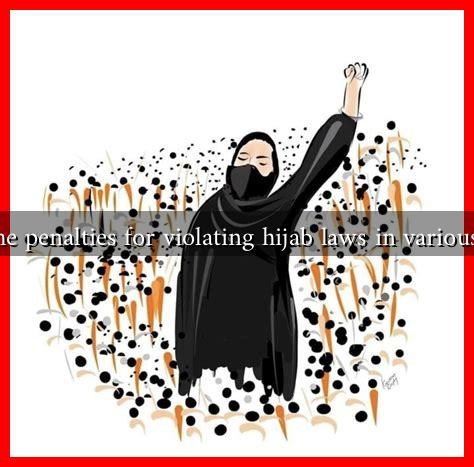-
Table of Contents
What are the Penalties for Violating Hijab Laws in Various Countries?
The hijab, a traditional headscarf worn by many Muslim women, has become a focal point of cultural and political debate in various countries. While some nations uphold the right to wear the hijab, others impose strict laws mandating its use or prohibiting it altogether. This article explores the penalties for violating hijab laws across different countries, highlighting the implications for personal freedom and human rights.
Understanding Hijab Laws Globally
Hijab laws vary significantly around the world, influenced by cultural, religious, and political factors. In some countries, wearing the hijab is mandatory, while in others, it is banned. The penalties for non-compliance can range from fines to imprisonment, reflecting the severity of enforcement in each context.
Countries with Mandatory Hijab Laws
In countries where hijab laws are enforced, the penalties for non-compliance can be severe. Here are some notable examples:
- Iran: Since the 1979 Islamic Revolution, Iran has mandated that women wear the hijab in public. Violators can face fines, imprisonment, or even physical punishment. In recent years, protests against these laws have led to increased crackdowns, with reports of women being arrested for defying the hijab mandate.
- Saudi Arabia: In Saudi Arabia, women are required to wear the hijab and an abaya (a loose-fitting cloak). While enforcement has relaxed in recent years, women who do not comply can face fines or harassment from the religious police.
- Afghanistan: Under the Taliban regime, women are mandated to wear the burqa, a full-body covering. Non-compliance can result in severe penalties, including imprisonment or physical punishment.
Countries with Bans on Hijab
Conversely, some countries have enacted laws prohibiting the wearing of hijabs in public spaces, particularly in educational and governmental institutions. The penalties for violating these bans can also be harsh:
- France: France has implemented a ban on wearing conspicuous religious symbols, including the hijab, in public schools since 2004. Violators may face expulsion from school or fines. The law reflects France’s secular values but has sparked significant debate about religious freedom.
- Belgium: In 2011, Belgium banned the wearing of full-face veils in public spaces. Women caught wearing a niqab or burqa can face fines or even imprisonment. This law has been criticized for targeting Muslim women and infringing on their rights.
- Netherlands: The Netherlands has also implemented a partial ban on face-covering clothing in public spaces, including schools and public transport. Violators may face fines, and the law has been met with mixed reactions from the public.
Case Studies: Real-Life Implications
The enforcement of hijab laws has led to numerous real-life implications for women around the world. For instance:
- In Iran, the case of Mahsa Amini, a young woman who died in police custody after being arrested for not wearing her hijab properly, sparked widespread protests and calls for reform. This incident highlighted the extreme measures taken by authorities to enforce hijab laws.
- In France, the ban on hijabs in schools has led to many Muslim girls feeling alienated and marginalized. Reports indicate that some have opted to leave school rather than comply with the law, raising concerns about educational access and equality.
Conclusion: The Ongoing Debate
The penalties for violating hijab laws reflect broader societal attitudes towards women’s rights, religious freedom, and cultural identity. While some countries enforce strict mandates on hijab wearing, others impose bans that limit personal expression. The ongoing debate surrounding these laws raises critical questions about the balance between cultural norms and individual freedoms.
As the global landscape continues to evolve, it is essential to consider the implications of hijab laws on women’s rights and freedoms. Understanding these laws and their penalties is crucial for fostering dialogue and promoting human rights worldwide.
For further reading on this topic, you can explore resources from organizations like Human Rights Watch and Amnesty International.

